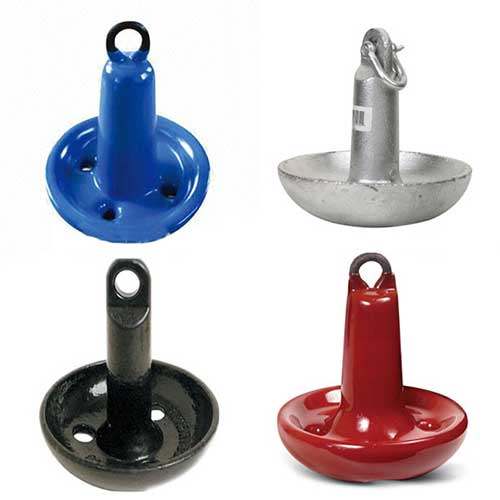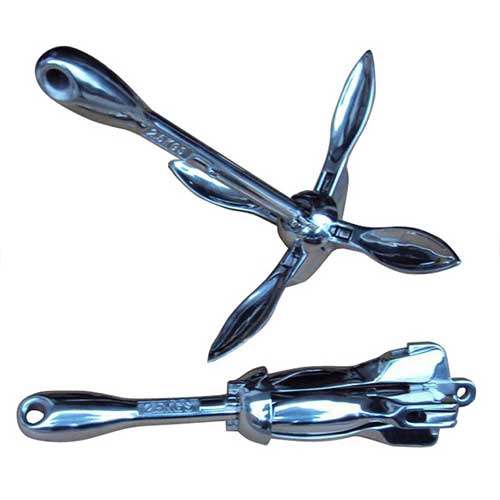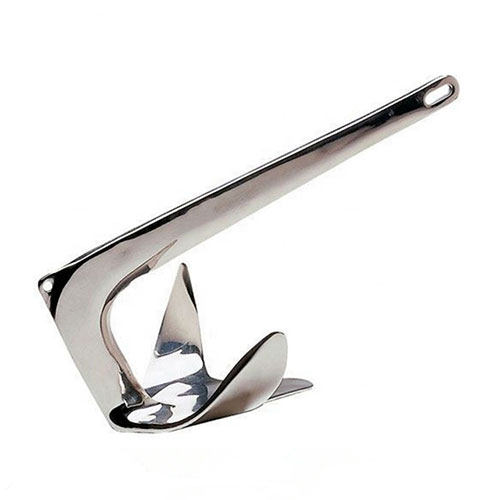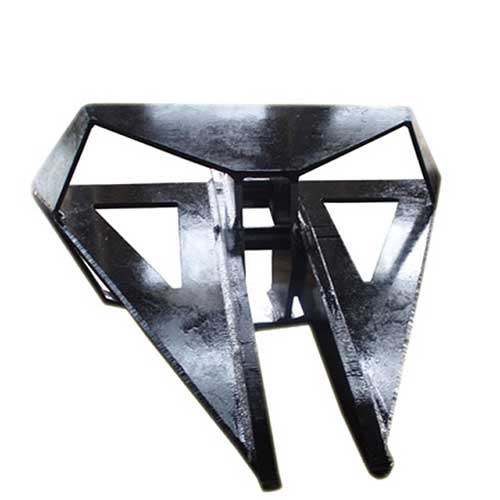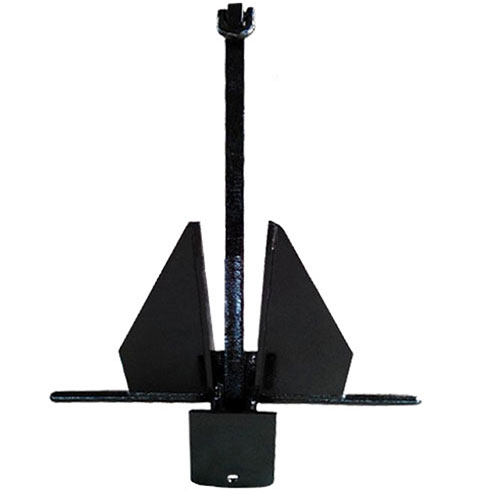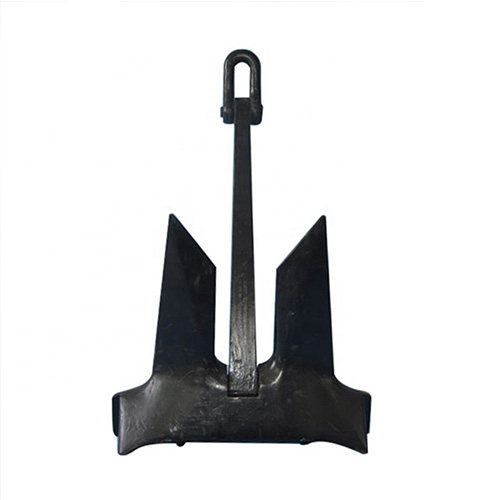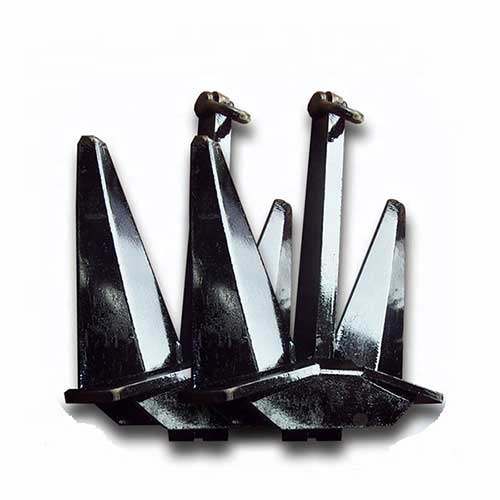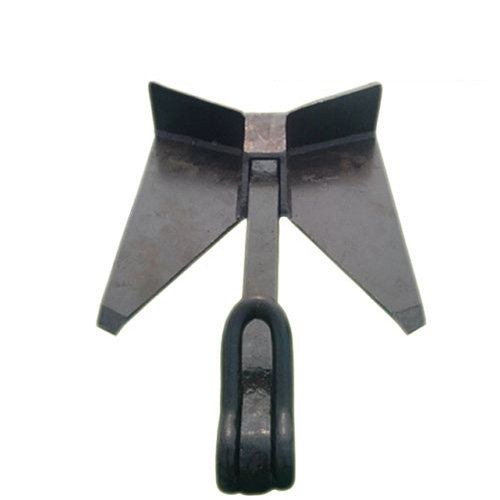How to Install Marine Anchors for Deep-water Vessels
The installation of marine anchors for deep-water vessels poses unique challenges due to the increased depths, unpredictable seabed conditions, and demanding operational requirements. Advanced techniques, tools, and strategies are essential to ensure secure anchoring and vessel safety. This article explores the key challenges in installing marine anchors for deep-water vessels and effective solutions for overcoming the complexities associated with installing marine anchors in deep-water environments.
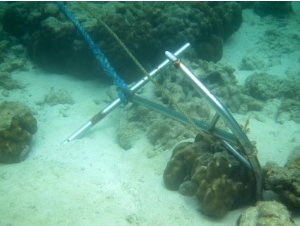
The Functions of Marine Anchors for Deep-Water Vessels
Marine anchors play a critical role in ensuring the stability and safety of deep-water vessels by securing them in place against powerful ocean currents, strong winds and varying seabed conditions. Unlike anchors used in shallow waters, those designed for deep-water applications must withstand greater forces and operate effectively over substantial depths.
- Stabilization and Mooring: Marine anchors provide the necessary holding power to keep vessels stationary, whether they are anchored for extended periods or during specific operations such as loading, unloading, or maintenance. This stabilization is vital for preventing drift and maintaining the vessel’s position in dynamic marine environments.
- Safety Assurance: In adverse weather conditions or during emergencies, anchors ensure that vessels remain secure, reducing the risk of accidents such as drifting into hazardous areas or colliding with other objects. Reliable anchoring is essential for the safety of the crew, cargo, and the marine ecosystem.
- Load Distribution: Marine anchors for deep-water vessels are engineered to distribute the load evenly across the seabed, minimizing the impact on the substrate and enhancing the anchor’s holding capacity. This is particularly important in areas with soft or uneven seabeds, where improper load distribution can lead to anchor failure.
- Environmental Adaptability: Deep-water anchors are designed to perform effectively across a variety of seabed types, including sand, mud, clay, and rocky substrates. Their adaptability ensures that vessels can anchor securely in diverse marine settings, from offshore oil rigs to research vessels exploring remote oceanic regions.
- Durability and Longevity: Constructed from robust materials resistant to corrosion and wear, deep-water marine anchors are built to endure the harsh conditions of the deep sea. Their durability ensures long-term reliability and reduces the need for frequent maintenance or replacement, which is both cost-effective and environmentally responsible.
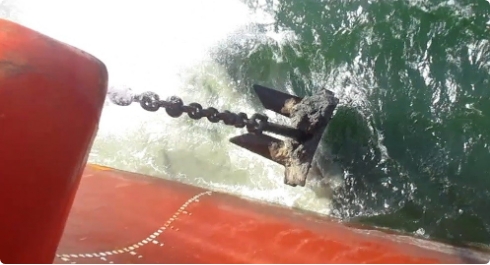
Challenges in Installing Marine Anchors for Deep-water Vessels
This chart summarizes the key challenges and their impacts on the installation of marine anchors for deep-water vessels, highlighting areas that require strategic planning and advanced solutions.
| Category | Challenges | Impact |
| Extreme Water Depths | – Long chains/cables increase deployment time. – Difficulty in monitoring anchor placement. | – Prolonged operations. – Higher risk of misplacement. |
| Unpredictable Seabed Conditions | – Varied seabed composition (mud, sand, rock). – Uneven terrain and obstructions (debris, pipelines). | – Incompatible anchor types. – Difficulty achieving proper embedding. |
| Harsh Environmental Forces | – Strong currents and waves displace anchors. – Turbulent weather conditions hinder stability. | – Increased risk of entanglement. – Delays in operations. |
| Equipment and Technology Limitations | – Insufficient capacity of standard equipment. – Failures in dynamic positioning or ROVs. | – Operational delays. – Higher risk of anchor misplacement or loss. |
| Deployment Precision | – Maintaining accurate positioning in dynamic conditions. – Avoiding chain tangling during descent. | – Misaligned anchor placement. – Increased installation time and cost. |
| Anchor and Chain Handling | – Heavy anchors and chains require specialized handling. – Risk of chain tangling or twisting. | – Equipment strain. – Potential damage to components. |
| Corrosion and Maintenance | – Accelerated corrosion in saltwater environments. – Difficulty in performing deep-water inspections. | – Reduced lifespan of anchors and chains. – Increased maintenance costs. |
| Cost and Resource Intensity | – High costs of specialized equipment and technologies. – Need for skilled personnel and redundancy. | – Increased project budgets. – Limited operational flexibility. |
| Environmental Impact | – Seabed disturbance affects marine ecosystems. – Compliance with environmental regulations. | – Negative ecological effects. – Additional time and resources for mitigation efforts. |
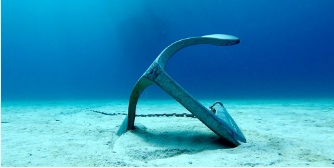
Effective Solutions to Overcome the Challenges Associated With Installing Marine Anchors on Deep-water Vessels
1. Selecting the Suitable Marine Anchor Types
This chart provides a quick reference for selecting the most suitable marine anchor type for various deep-water vessel applications.
| Anchor Type | Key Features | Suitable Seabed Types | Applications |
| Drag Embedment Anchor | – High holding power – Buries into the seabed | Soft seabeds like sand, clay, and mud | Temporary mooring for vessels and offshore platforms |
| Stockless Anchor | – Compact design – Easy to store and deploy | Varied seabeds, including mud and sand | General-purpose anchoring for large vessels |
| Suction Anchor | – Relies on vacuum forces for stability – Works in ultra-deep waters | Soft seabeds like mud and clay | Offshore structures, mooring floating production systems (FPSOs) |
| Vertical Load Anchor (VLA) | – High vertical holding capacity – Excellent for areas with strong currents and wave action | Clay, sand, and mixed seabeds | Permanent moorings for oil rigs and deep-water installations |
| Plate Anchor | – Embedded vertically – High holding power with minimal drag | Soft to medium seabeds like sand and clay | Semi-permanent moorings and mooring buoy systems |
| Deadweight Anchor | – Heavy and stable – Does not rely on embedding | Rocky or uneven seabeds | Situations requiring stability without significant seabed penetration |
| Mooring Anchor | – Specialized designs for fixed and floating mooring systems | Varied, depending on design | Long-term moorings for ports, harbors, and deep-sea exploration vessels |
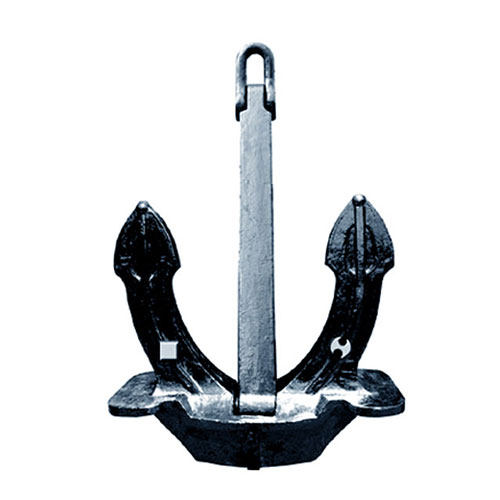
Key Considerations for Selection:
- Seabed Composition: Conduct a seabed survey to match the anchor type to the substrate.
- Water Depth: Ensure the anchor design and deployment systems are compatible with the depth of operation.
- Vessel Size and Load: Select anchors with appropriate holding power to accommodate the vessel’s size and operational forces.
- Purpose: Temporary versus permanent anchoring will influence the choice of anchor type.
2. Use of Advanced Deployment Systems
Modern deployment technologies enhance the efficiency and accuracy of anchor installations. Key tools include:
- Dynamic Positioning (DP) Systems: Enable precise vessel positioning during anchor deployment, compensating for environmental forces such as wind and currents.
- Hydraulic and Electric Winches: Provide controlled descent of anchors and chains to prevent entanglement or damage.
- Remotely Operated Vehicles (ROVs): Facilitate real-time monitoring of anchor placement and ensure proper orientation on the seabed.
3. Seabed Preparation Techniques
Certain seabed conditions may require preparation to ensure effective anchor embedding. Solutions include:
- Dredging and Leveling: Smooth out uneven seabed areas to provide a stable anchoring surface.
- Gravel or Rock Placement: Create a firm foundation in soft or unstable seabeds to prevent anchor shifting.
4. Tensioning and Embedding Procedures
Proper embedding of the anchor is crucial for achieving maximum holding power. Effective techniques include:
- Controlled Lowering: Gradually lower the anchor to prevent sudden impacts that could disturb the seabed.
- Horizontal Pull Testing: Apply a controlled horizontal force to ensure the anchor digs into the seabed effectively.
- Chain Tensioning: Adjust the chain length and tension to ensure a secure grip, typically following a ratio of chain length to water depth (e.g., 3:1 to 7:1).
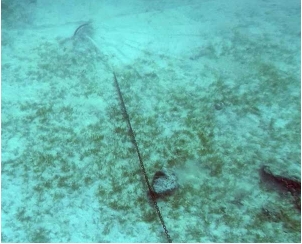
5. Monitoring and Feedback Systems
Real-time monitoring tools provide critical feedback during the installation process, ensuring precision and security:
- Acoustic Positioning Systems: Map the anchor’s location and surrounding seabed to verify proper placement.
- Load Sensors: Measure tension in the chain to confirm effective embedding and identify potential issues.
- Sonar and Imaging Tools: Offer detailed visuals of the anchor and seabed during deployment.
6. Corrosion Protection Solutions
Marine anchors and anchor chains are exposed to corrosive environments, necessitating protective measures:
- Anti-Corrosion Coatings: Apply specialized coatings to resist rust and prolong equipment life.
- Cathodic Protection: Install sacrificial anodes to protect metal components from electrochemical corrosion.
- Regular Cleaning: Use underwater cleaning systems to remove marine growth and debris.
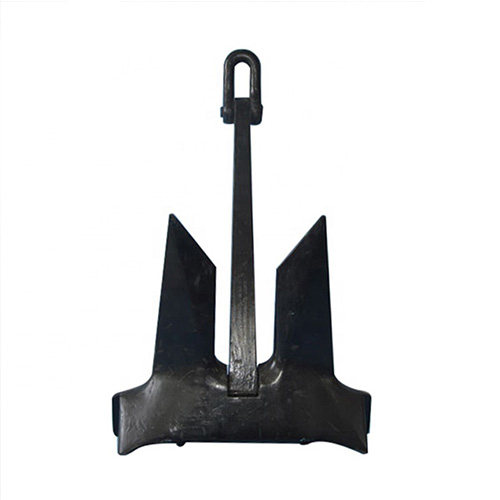
7. Post-installation Inspections
Verifying the anchor installation ensures long-term stability. Effective inspection methods include:
- Remotely Operated Vehicle (ROV) Inspections: Capture real-time images and data on anchor placement.
- Holding Power Tests: Apply controlled force to test the anchor’s resistance to movement.
- Routine Maintenance Checks: Schedule regular inspections to identify and address wear, corrosion, or displacement.
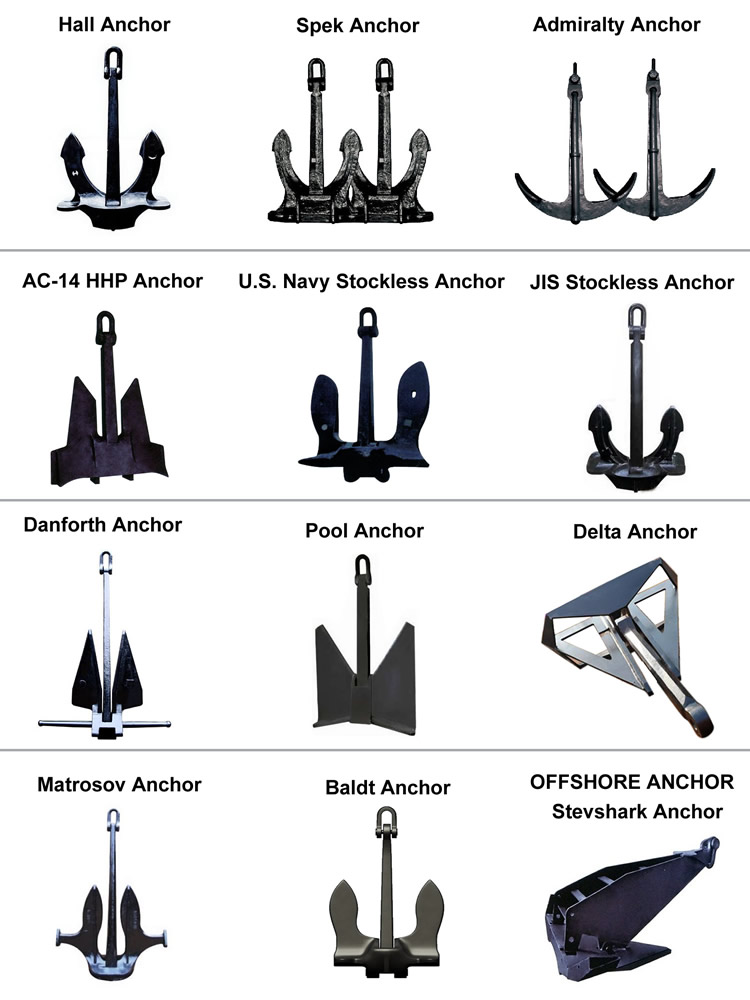
Conclusion
Installing marine anchors on deep-water vessels requires a combination of innovative technology, precise techniques, and proactive maintenance strategies. From selecting the right anchor type to adopting real-time monitoring systems and preparing the seabed, these solutions ensure secure and reliable anchoring. Through addressing the specific challenges of deep-water environments, operators can enhance safety and efficiency, enabling vessels to perform their operations with confidence in challenging marine conditions.


